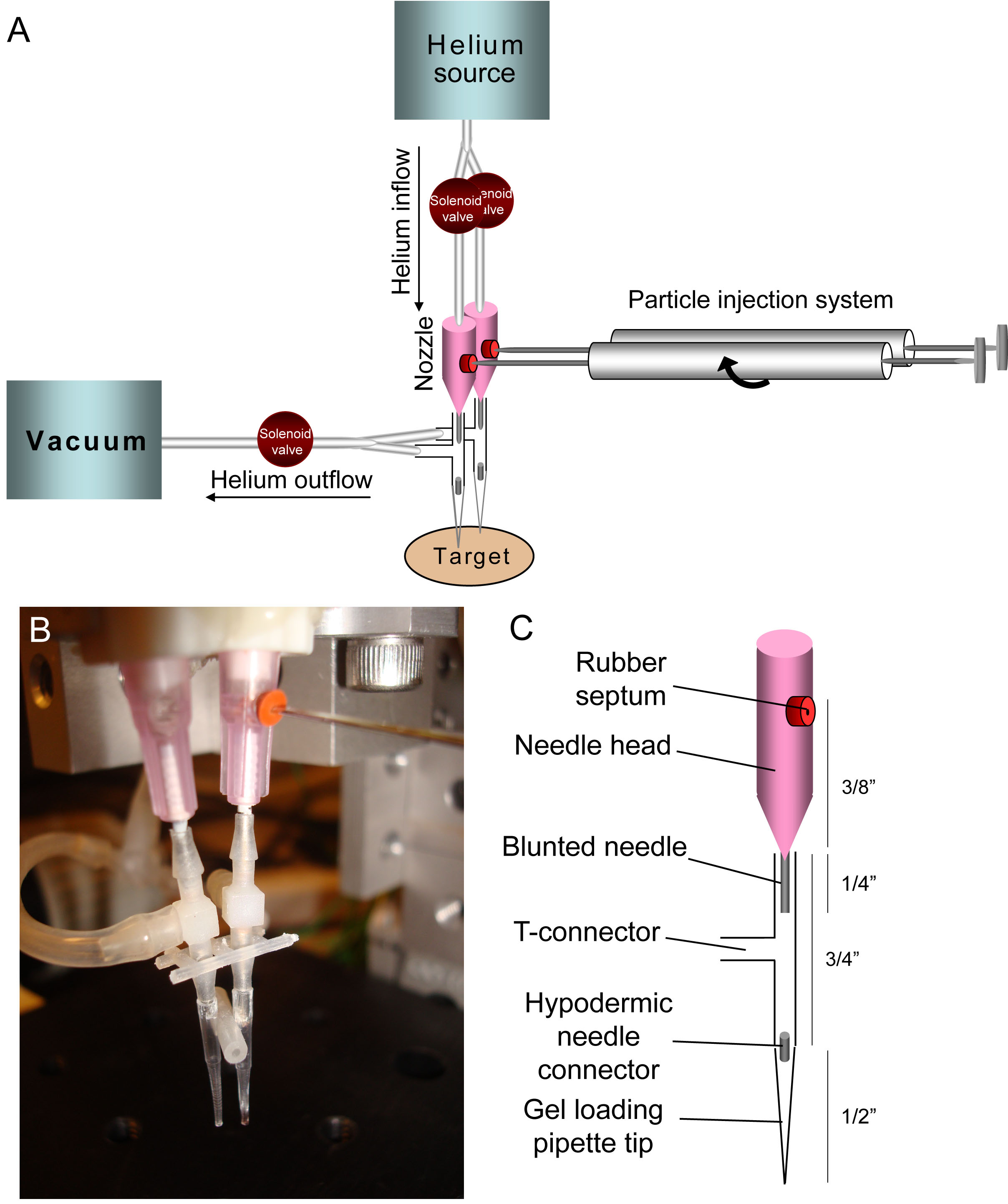Figure 1. Modified capillary gun
apparatus. A: The modified capillary gun was constructed
according to the schematic shown above. B, C:
The gun’s nozzle is made up of a blunted Luer lock disposable
needle (18 gauge), plastic T-connector, and gel loading pipette
tip, assembled as shown in the diagram. As described in more
detail in the text, low-pressure helium flow is used to
accelerate aliquots of DNA-coated gold microparticles suspended
in ethanol that are injected into the head of the needle. As the
microparticles emerge from the tip of the blunted needle, a
vacuum flow is used to divert the bulk flow of helium through
the side arm of the T-connector. As the flow rate of the vacuum
just exceeds that of the helium inflow, the dense gold
microparticles continue along their initial trajectory through
the T- and hypodermic needle connectors to the gel loading
pipette tip for emission. During this process, the ethanol is
removed and/or evaporates such that the microparticles are dried
by the time they reach the target retinal tissue after a brief
flight through air.

 Figure 1
of Christianson, Mol Vis 2011; 17:2947-2955.
Figure 1
of Christianson, Mol Vis 2011; 17:2947-2955.
 Figure 1
of Christianson, Mol Vis 2011; 17:2947-2955.
Figure 1
of Christianson, Mol Vis 2011; 17:2947-2955.
